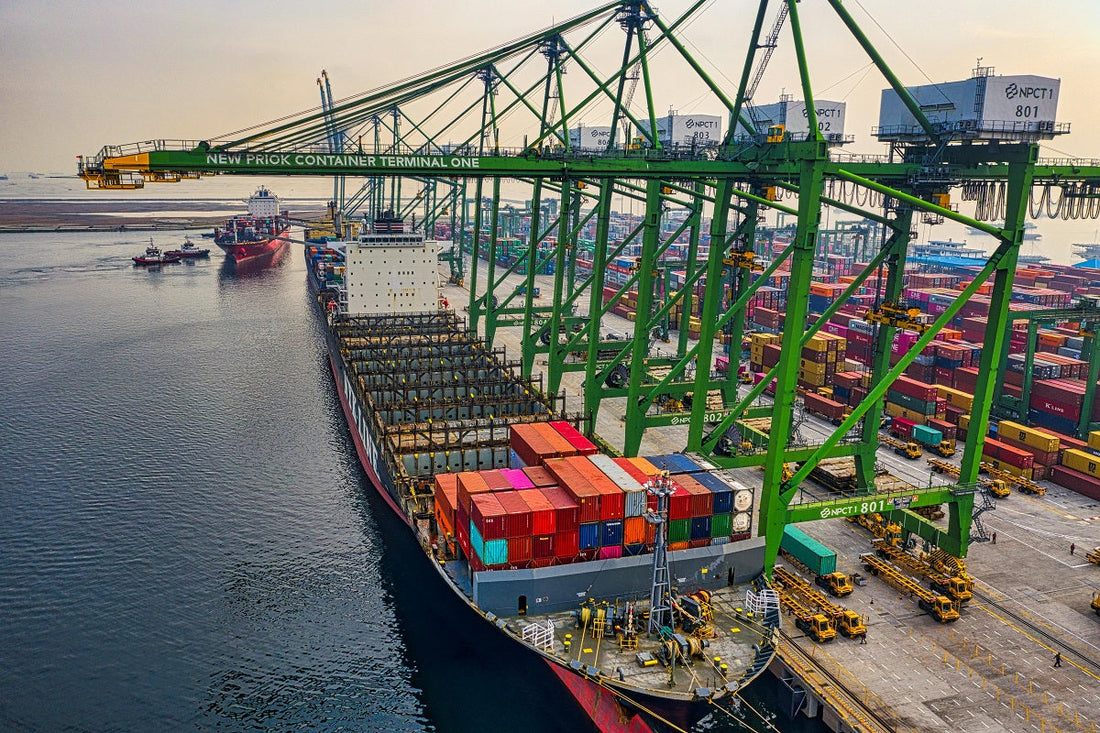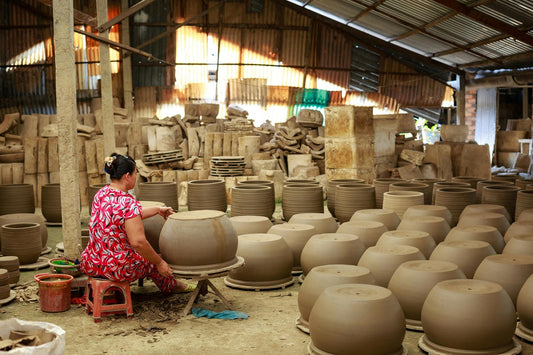
What to Do When Your Bulk Planter Shipment Is Delayed or Damaged
Share
When a bulk shipment of planters arrives late or damaged, it can disrupt your entire inventory flow and cause unnecessary stress. Unexpected delays, broken items, and communication gaps can quickly affect your business operations and customer commitments. However, with a clear plan in place, you can manage these challenges effectively and even turn them into opportunities to improve your supply chain. In this guide, we’ll walk through practical steps to handle delayed or damaged shipments while strengthening your import and supplier management process for the future.
Assessing the Situation Immediately
When your shipment arrives damaged or delayed, the first step is to understand exactly what went wrong. Acting quickly and systematically helps you protect your business while gathering the details needed to resolve the issue. By assessing the situation early, you can document the facts clearly, prevent further complications, and move toward an efficient solution.
Inspecting the Shipment Upon Arrival
Once your containers arrive, take the time to inspect them thoroughly before signing off on the delivery. Check for visible signs of mishandling—dented boxes, torn straps, or moisture stains often point to problems inside. Open several cartons or pallets to assess whether the planters show chips, cracks, or finish defects. As you go, take clear, timestamped photos and detailed notes. These records are invaluable when filing insurance claims or requesting replacements, ensuring your report is supported by solid evidence.
Reviewing Shipment Documents
After completing your inspection, carefully review all related shipping documents. Cross-check the packing list, invoice, and bill of lading to confirm that quantities, item codes, and specifications align with your order. If you notice discrepancies or missing items, record them right away. This simple step helps you determine whether the issue originated with the supplier or during transit, making your next steps—such as filing claims or communicating with partners—much more efficient and accurate.
Communicating with Suppliers and Freight Partners
Once you have verified the extent of the problem, communication becomes essential. Keeping an open and professional tone helps ensure cooperation and accountability among all parties involved.
Reporting Issues Promptly
As soon as you confirm that a shipment has been delayed or damaged, notify your supplier or freight carrier right away. Share a concise summary of the issue, include timestamped photos, and attach any relevant documents. Reporting problems within 24 to 48 hours demonstrates professionalism and helps expedite resolution. Prompt communication also allows your partners to respond quickly, take responsibility where needed, and begin processing claims or replacements without unnecessary delays.
Determining the Source of the Problem
Not every shipping issue stems from the same cause, so identifying where things went wrong is key. Work closely with your supplier and freight partner to trace the issue. If damage occurred during transit, the carrier may bear responsibility. However, if poor packaging or weak materials contributed, it’s likely a supplier concern. Pinpointing the root cause allows you to address it directly, set clearer expectations, and prevent the same problem from happening again.

Filing Claims and Documentation
When financial loss is involved, documentation is your strongest tool. Filing accurate and timely claims ensures that your business recovers costs while maintaining a record of what went wrong.
Preparing a Damage Report
Start by preparing a detailed damage report that outlines exactly what occurred. Include clear photos, invoice and batch numbers, and specific details about each affected item. A well-organized report helps everyone involved—from your supplier to the freight carrier—understand the scope of the problem quickly. It also streamlines the claims process and strengthens your documentation for future reference. Keeping a copy for your records ensures you have a complete history of the incident for quality and logistics review later on.
Submitting Freight or Insurance Claims
After preparing your damage report, review your shipping contract or supplier agreement to understand the proper claim procedures and deadlines. Submit all required documentation promptly, ensuring it is complete and accurate. If the shipment is insured, contact the insurance provider immediately and follow their instructions carefully. Clear, organized submissions help speed up compensation or replacement, minimizing disruption to your inventory and operations.
Managing Inventory and Customer Expectations
While waiting for replacements or reimbursement, you still need to keep your business running smoothly. Managing inventory carefully and communicating clearly with your customers helps maintain trust and minimize disruption.
Updating Stock Availability
Update your inventory records promptly once you identify damaged or missing items. For online stores, temporarily mark affected products as unavailable and suggest alternatives to maintain customer engagement. Accurate stock tracking ensures you can reorder efficiently and prevents overselling while the issue is being resolved.
Communicating with Customers
Reach out promptly if customer orders are affected by delays or damaged shipments. Briefly explain the situation, provide an updated restock timeline, and suggest alternatives or backorder options. Being transparent and proactive helps maintain trust, and keeping customers informed demonstrates that your business prioritizes reliability and excellent service.
Preventing Future Shipping Issues
Once the immediate problem is under control, take time to analyze what went wrong and how to prevent it in the future. Continuous improvement helps you reduce risk and strengthen your logistics process.
Reviewing Packaging and Handling Processes
Examine the materials and techniques used for packing your planters. If fragile items frequently arrive damaged, ask your supplier for improved cushioning, secure pallet arrangements, or moisture-resistant packaging. Whenever possible, test packaging samples before the next shipment. Making these adjustments proactively often saves more time and money than dealing with repeated damage claims.
Choosing Reliable Freight and Insurance Partners
Selecting the right freight and insurance partners is essential for protecting your bulk planter shipments. Work with companies experienced in handling ceramic, fiberglass, or large-format planters, and ensure they offer tracking and coverage tailored to your shipment size and value. Proper insurance provides peace of mind, especially for international deliveries where the risk of damage is higher.
Implementing a Shipment Tracking System
Using digital tracking tools lets you monitor shipments in real time, from departure to delivery. These systems provide updates on route progress, customs clearance, and estimated arrival times, giving you the ability to anticipate delays and keep your team or customers informed.

Strengthening Supplier Relationships After a Setback
How you handle a shipment issue can define your long-term supplier relationships. A well-managed response shows professionalism and can even strengthen collaboration.
Reviewing Supplier Performance
Once the issue is resolved, assess how your supplier handled the situation, including response time, clarity of communication, and their willingness to provide solutions. Reliable partners take responsibility and act proactively to prevent future problems. Documenting their performance helps inform future sourcing decisions and strengthens your supplier evaluation process.
Establishing Clearer Agreements
Update your contracts to include specific terms about packaging standards, inspection procedures, and replacement timelines. Setting these expectations early prevents miscommunication and helps suppliers understand your standards for consistency and accountability.
Handling Delayed or Damaged Bulk Planter Shipments
Managing delayed or damaged planter shipments requires a structured approach, combining quick assessment, clear communication, and careful documentation. By inspecting arrivals, reporting issues promptly, filing accurate claims, and refining packaging and logistics practices, you protect your inventory, maintain customer trust, and strengthen supplier relationships. Adopting these strategies turns challenges into opportunities to improve your supply chain and ensure smoother operations in the future.
If you want to simplify your import process and reduce the risk of delays or damage, TT Pottery can help. Our direct factory-to-store supply chain is efficient, fully insured for damages exceeding 3%, and designed with low minimum orders for independent garden centers. Learn more about how TT Pottery supports reliable shipments and stress-free inventory management!


